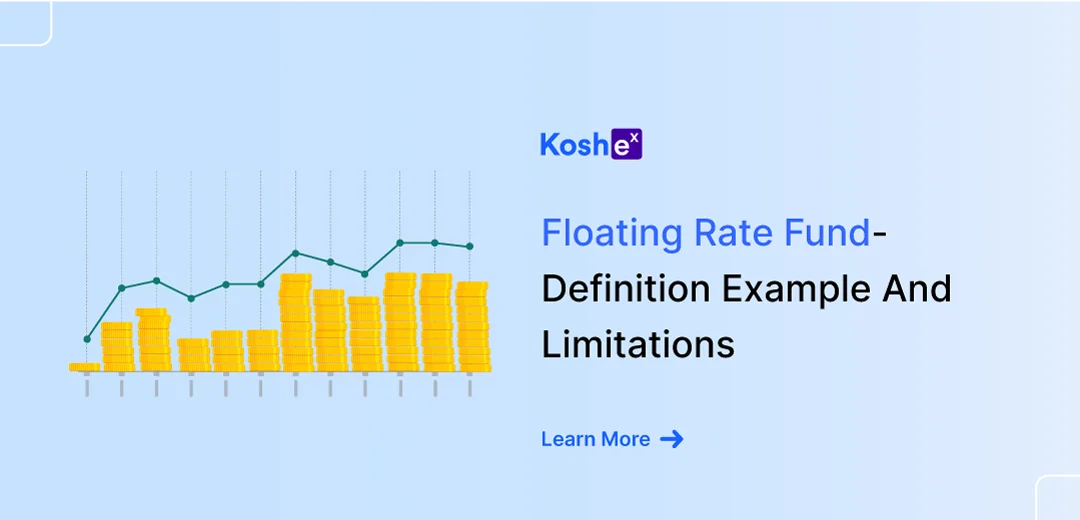What is Mutual Funds
Mutual funds are an investment option wherein a pooled fund is collected from several investors and invested in assets like bonds, stocks, or money market instruments. It is an ideal way to invest in a security or asset without doing so directly.
Mutual funds are popular because they minimize the risk and volatility that comes with riskier options such as stock markets and are apt for investors who have chartered their goals in mind.
Types of Mutual Funds
A mutual fund scheme is classified based on asset class, structure, investment goals/philosophy, speciality, and risks. An investor may pick any of these mutual funds based on their risk profile, investment objectives, and time horizon.
1. Asset-Class Mutual Funds
Equity Funds:
These funds allow you to invest in stocks or equity shares of companies. Due to the stock market’s volatility, equity funds can involve a certain amount of risk but may generate higher returns than other funds.
Equity funds are classified as small-cap, mid-cap, and large-cap equity funds, based on the market cap of the companies these equity funds invest in.
Debt Funds:
Debt-based mutual funds are those that invest in debt instruments such as bonds or government securities. They earn a steady income and are not as risky as equity funds.
Money Market Mutual Funds:
These funds invest in money market instruments such as treasury bills, certificates of deposit, commercial papers or repurchase agreements (repo).
These funds are advisable for individuals who have short-term cash requirements and would like to liquidate their investments as and when required.
Hybrid Funds:
These funds invest in a combination of debt and equity options. You can choose from multiple hybrid funds such as equity-oriented, debt-oriented, balanced funds, arbitrage funds or monthly income plans.
These plans differ on the percentage of funds involved in different asset classes. For instance, arbitrage funds invest in futures and options and have higher equity exposure.
2. Structure-Based Funds
Open-Ended Funds:
These funds allow investors to buy or redeem units at any time of the year, at the prevailing net asset value (NAV). The biggest advantage is that they are liquid and can be withdrawn at any time.
Close-Ended Funds:
Close-ended mutual funds are those where the units can be bought only during the new fund offer (NFO) period and are traded at discounts or premiums.
They can only be redeemed after the fund matures, which can be anywhere between three and seven years. Since they have a longer lock-in period, they are suited for investors looking at a longer investment horizon.
Interval Funds:
This mutual fund scheme allows investors to buy or sell units only during specific intervals of time. Although these funds can invest in equity or debt, you will find them largely investing in debt instruments.
3. Speciality Funds
Sector Funds:
These are fund schemes that invest in a specific sector such as infrastructure, IT or pharma. The returns are linked to the performance of the specific sector.
Index Funds:
These funds are not managed by fund managers and are ideal for passive investors. The funds are invested in a financial index and are in line with the performance of the index.
Exchange-Traded Funds:
It is an investment option sold and bought on the exchanges and belongs to the index fund family.
Asset Allocation Funds:
These are funds that invest in various assets, including equity, debt or gold, commodities or metals.
Fund of Funds:
This is a mutual fund scheme that is also called a multi-manager mutual fund. It allows the investor to invest in different portfolios belonging to other funds.
4. Risk-Based Fund Schemes
SEBI recently announced new risk levels and introduced its own ‘risk-o-meter’ for mutual funds currently in operation.
The original risk meter had each fund being rated based on five risk levels: High, Moderately High, Moderate, Low to Moderate, and Low. However, that meter was not a fund risk meter but a fund category risk meter.
With the new risk-o-meter, now investors can understand the actual risk associated with each fund’s portfolio. It allows you to judge whether or not to invest in a fund.
As your portfolio and the market conditions change, the meter’s risk level also changes and allows you to decide whether to redeem a fund. Here is how risk-based mutual funds are classified.
- Low-risk: A low-risk fund is aimed at investors who don’t want to take too many risks with their investments. This investment option is for the long-term and mostly invests in debt funds.
- Medium-risk: This type of mutual fund poses a moderate risk to an investor and is ideal for those willing to take some risk to seek higher returns.
- High-risk: High-risk funds are ideal for investors who are not averse to risks. Such a mutual fund scheme requires active fund managers and greater active involvement of the investor when tracking and researching.
5. Investment Objective-Based Mutual Funds
Growth Funds:
Such a mutual fund scheme allows investors to grow their wealth and are typically equity funds. They invest in shares or growth sectors and are riskier with the possibility of higher returns than other funds.
Income Funds:
Income funds invest in debt instruments and are ideal for investors who wish to have steady returns. The risk associated with such funds is at moderate or low levels.
Liquid Funds:
These funds invest in short or very-short term securities to generate liquidity, making them ideal for looking at a short-term investment option. These funds come with a tenure of not more than 91 days.
Tax-Saving Funds:
Known widely as ELSS (equity-linked savings schemes), they help investors save tax under Section 80C of the Income Tax, 1961. Investors can claim a deduction of up to INR 1.5 lakh in a financial year after investing in them.
Commodity-Focused Stock Funds:
These funds are not directly invested in commodities but in companies working in such markets. Examples are companies that are into mining or commodity production.
Market Neutral Funds:
These funds don’t involve direct investment in the markets but invest in securities, ETFs or treasury bills to generate steady and regular growth.
Pension Funds:
As the name suggests, these are funds that have a long-term perspective and aim to provide steady returns after retirement.
Objectives and Investment Style
While selecting a mutual fund scheme, it is essential to grasp the fund’s objective and see if it aligns with your own investment goals.
For instance, if you want to create a retirement fund, you may want to choose an investment option that provides regular income after hanging your boots.
If you are at an early stage of your career and willing to take risks, you may choose a different fund.
It is also possible for you to have multiple objectives, depending upon your financial responsibilities. The one that takes priority will be the primary objective, and the rest can be secondary.
As you identify these personal goals, it will become simpler to choose the right mutual fund scheme. For instance, an equity fund’s objective could be capital growth, equity income, or a combination of the two.
In a debt fund, the primary objective is generally income generation.
As an investor, it also helps to note that a mutual fund’s objective and its investment style is not always the same.
The investment style is the approach a fund takes to meet the end goal. As there can be several styles to achieve the same objective, you may want to understand a mutual fund scheme in detail.
For instance, a fund manager who has capital appreciation as the objective can buy undervalued stocks of companies or invest in products no longer of value to investors.
The fund manager expects that the prices will grow in the future or the problems with the company are temporary while its fundamentals are strong. Another fund manager might focus on stocks belonging to new companies that belong to emerging sectors.
The objective of both is capital appreciation, while the approach is different.
Importance of Mutual Funds
Diversification:
The principal goal of a mutual fund is to offer diversification. Because a mutual fund invests in other securities and companies, the investor automatically diversifies their portfolio by investing in one.
Affordable:
Affordability is another benefit as mutual funds allow all kinds of investors to invest. For instance, a mutual fund scheme can help a beginner get started at minimal investment.
By opting for a systematic investment plan (SIP), an investor can pick a scheme and invest a fixed amount periodically, for example, every month or quarter, and grow their investment gradually.
Multiple Options and Flexibility:
An investor looking at a mutual fund as an investment option has the benefit of choosing from a wide range of options. Mutual fund schemes provide investors with the flexibility to choose funds based on their financial objectives and risk profiles.
Professionally Managed:
Another reason that makes mutual funds an important investment option is that professional fund managers manage them. These managers are experts and use sophisticated strategies to invest in different asset classes.
This means an average investor who is hard-pressed for time or doesn’t have the expertise to focus on individual asset classes can now pick a mutual fund scheme and enjoy fund managers’ expertise.
Key Takeaway
As seen here, mutual funds are an ideal investment option for both beginners and seasoned investors.
As there is a wide variety of mutual funds that you can choose from, it is advisable to align with your financial objectives, risk appetite, and investment styles.









Leave a Comment